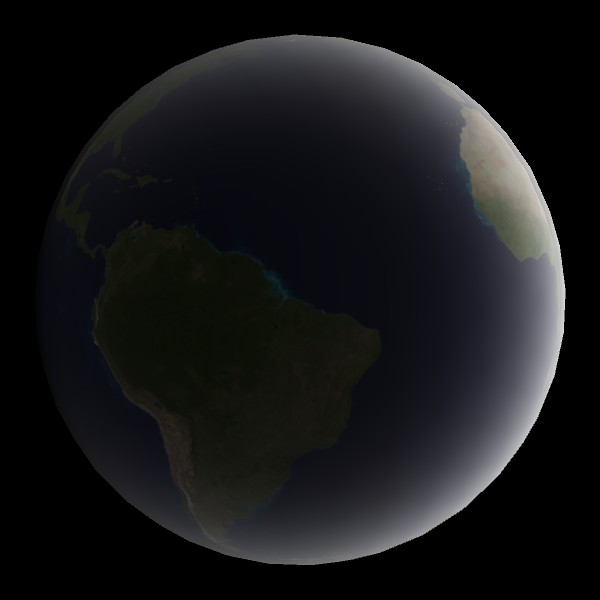I reviewed papers and materials on accurately visualising atmospheric scattering according to Nishita’s algoritm. These algorithms require integration upon integration to sum up all the light that is scattered in the direction of the viewer for every vertex and therefore very computationally heavy. I tried an optimized one – with a fast lookup table and only one intensity channel – and it only ran at 90 FPS on my 2015 CPU Intel Core i7-6500U. It would run too slow on the modest Android hardware I am aiming for.
I studied the visualisations to find features that could be replicated. I made another sphere with a transparent shader with a size relative to the planet similar to the outer atmosphere radius (6 471 km) and the Earth radius (6 371 km). My plan is that the outer sphere’s shader should replicate the atmosphere lighting’s features (multi-scattering), and the planet surface shader should replicate the Earth surface’s reflection (single-scattering). I started working on the atmosphere shader and used a Unity diffuse shader for the planet surface for now.

My first version was a Fresnel shader to simulate the longer length of atmosphere the viewer sees towards the edges of the planet. With just this shader, the edges of the planet were always lit from all directions regardless of sun position, as seen above. This was multiplied by a diffuse shader that lit up even obtuse angles to simulate the light scattering around into the unlit half of the planet.


You must be logged in to post a comment.